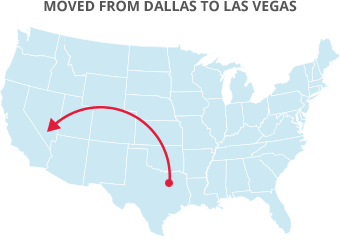

By Julie DeLong, A-1 Freeman Moving Group
 Moving is a tough process, and it only gets tougher if you have four-legged friends who are coming with you. If you have dogs, cats, or both, then here are a few, simple things you can do to make the moving process easier on them, and on yourself.
Moving is a tough process, and it only gets tougher if you have four-legged friends who are coming with you. If you have dogs, cats, or both, then here are a few, simple things you can do to make the moving process easier on them, and on yourself.Tip #1: Have One, Final Vet Visit
Some pets don't like going to the vet, but if you're moving it's important to make sure your animals get one, final checkup. This is doubly important if you're moving far enough away that you'll need to find a new vet, or if a plane is going to be involved. Make sure you get proof of vaccinations, medications, and any other paperwork you're going to need. If you wait until you're too far from your vet to get this done, it can be a huge, unnecessary headache to add on top of your move.
Tip #2: Board Your Pets (If You Can)
Boarding can be rough on animals who have separation anxiety, but it's often a better solution in the long-run if you're moving to a new house. If you board your animals for the moving day then you don't have to worry about them being underfoot, there's no chance of them running away, and you aren't constantly keeping track of them. It saves time, frustration, and risk, which can help your move go a lot more smoothly.
Tip #3: Preserve as Much Routine as Possible
Our pets like routine, and they are sensitive to when it changes. Changes in routine might be a threat, so it tends to result in all kinds of extra stress on their part. As such, you should try to organize your move so that it disrupts your pets' routines (as well as your own) as little as possible. Let them get used to what's happening slowly, and they will respond much better. Additionally, when you move them, make sure you bring familiarity with them when you can. Favorite toys and bedding can act like a security blanket, and help your pets stay calmer throughout the process.
Tip #4: Make Sure Your Pets Are Used to Their Accommodations
Whether you have dogs or cats, you don't want to scoop them up, toss them in the car, and start driving one day. You need to take the time to get your pets used to traveling. For example, if you have a cat, put their carrying case on the floor with the door open. Let them get used to it being there, and give them a chance to explore it. If you have a dog, get them used to a crate, or a kennel. Take them on progressively longer car trips, and get them used to being passengers if you can. The more time you can take getting your pets on-board with moving (even if they're never really going to like it), the easier things are going to be.
Tip #5: Identification
Make sure and keep identification on your pet at all times. If the unthinkable happens and your pet gets lost in the shuffle of the move, how else will they find their way back to you? Make sure that their collar fits correctly and that their tag includes a phone number that won’t be disconnected during the move.
Tip #6: Chill Out... Your Pets Are Watching
Moving is stressful, there's no two-ways about that. Even if everything goes perfectly (which it never does), you're going to have days where you just want to lay on the floor and throw a good, old-fashioned fit. No matter how stressful things get, though, it's important for you to remember that little eyes are watching you, and that you might be scaring them.
Your pets are already under a lot of stress from the whole process of moving. New stuff is appearing without explanation, familiar stuff is going out the door, and there are new people showing up all the time. So, take a moment, take a breath, and remember that your pets need you to be calm and reassuring for them. Otherwise it might tip them over the edge of the stress meter.

